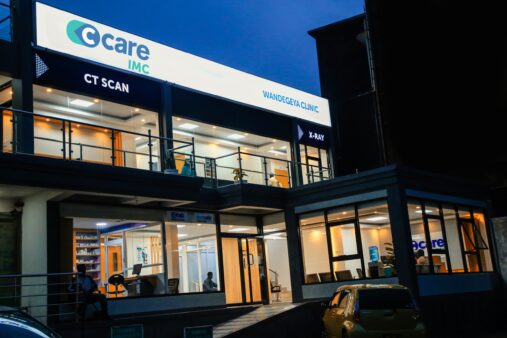Besides reducing the cost of doing business in Uganda by addressing such other issues as high tax rates, corruption, inadequate supply of infrastructure and inefficient government bureaucracies, I want to address myself to an issue that is hardly talked about: information asymmetry.

I have argued before that despite the central bank’s efforts to bring down the cost of borrowing by reducing the Central Bank Rate (CBR) to a historically low of 9% and by bringing down the rediscount and bank rates to 13% and 14%, respectively, the cost of credit in Uganda still remains comparatively high.
Matter of fact, of the four major East African economies (Kenya, Uganda, Tanzania and Rwanda), Uganda has the highest average lending rates.
Given that these countries in 2016 imported USD685 million (UGX2.5 trillion) or 27.4% of Uganda’s USD2.5 billion total exports, aligning our lending rates to the region is critical for the competitiveness of our exports regionally and beyond.
Enhanced export competitiveness should translate into better balance of payments and a stable shilling, all of which are good for the Ugandan economy.
Domestically, affordable cost of financing translates into low inflation levels that stimulate local demand, itself spurring job creation and economic growth. Therefore, a lot more joint effort is needed by government, the central bank, commercial banks and the borrowing public to further bring down the cost of borrowing.
Besides reducing the cost of doing business in Uganda by addressing such other issues as high tax rates, corruption, inadequate supply of infrastructure and inefficient government bureaucracies, I want to address myself to an issue that is hardly talked about: information asymmetry.
But what is information asymmetry?
Also known as information failure, this is when one party to an economic transaction possesses greater material knowledge, knowledge that could influence critical decision making, than the other party.
In the context of credit extension, information asymmetry is often a result of a prospective borrower not sharing enough information about themselves and there is not enough avenues from which the prospective lender can access usable information about the prospective borrower and or the intended use of the borrowed money.
Critical to this discussion are the principles of adverse selection and moral hazard. Whereas adverse selection occurs when there’s a lack of adequate information prior to a lending transaction between a lender and a borrower, moral hazard occurs when after the deal is struck, one party, often the borrower diverts the money from the intended or stated purpose for which it was borrowed.
Because of lack of credible sources of information that would make it easy to predict risk and or predict credit worthiness, lenders in Uganda tend to play safe by charging blanket premiums over and above the existing prime lending rates as compensation for the risk arising out of the inability to determine who indeed should be lent to.
This ultimately increases the cost of borrowing on everybody- good borrowers and bad borrowers alike, ultimately increasing the likelihood of defaulting for both. This perhaps explains why over the last 5 years, there has been a strong correlation between high interest rates and historically high rates of Non-performing loans.
In developed markets, the issue of information asymmetry has largely been resolved by the introduction of Credit Reference Bureaus that allow lenders and other financial and or credit services providers to predict with near precision an entity’s credit worthiness based on past behavior and therefore be able to separate good borrowers/debtors from bad borrowers/debtors. Generally speaking, good borrowers who are perceived to have low risks, enjoy good rates.
Back here in Uganda, although we have had a Credit Reference Bureau (CRB)- established by Section 78 of The Financial Institutions Act (2004) and officially launched in December 2008, there hasn’t been notable changes especially on the cost of borrowing that can be attributed to the CRB.
Matter of fact, today, average lending rates are virtually unchanged from what they were in 2008 when the Credit Reference Bureau was launched and Non-Performing Loan ratios have grown by more than 2 times in the same period.
Thankfully, amendments have been made to the law establishing the Credit Reference Bureau but much more needs to be done. Section 78 (6) of The Financial Institutions (Amendment Act) 2016 now allows for the expansion of the CRB to include access and use of the Credit Reference Bureau by other credit providers or service providers not licensed and or regulated by the central bank such as companies involved in the provision of goods and services on credit to the public such as utility companies.
This amendment once implemented will enrich the quality of information in possession of the Credit Reference Bureau companies and thus allow for better risk mitigation for lenders.
There are also increased data integrity opportunities and better credit scoring chances if we integrated data from Uganda Revenue Authority, National Social Security Fund, Kampala City Council Authority, National Identification and Registration Authority and Uganda Registration Services Bureau.
Besides this, we also could look into best practices that have worked in other countries such as group lending, where the risk is spread across many people, that worked so well in Bangladesh and other South Asia countries.
The writer is the Managing Director of Uganda Breweries Limited (UBL)

 Letters to My Younger Self: Humphrey Asiimwe—"Ambition Without Purpose Leads Nowhere"
Letters to My Younger Self: Humphrey Asiimwe—"Ambition Without Purpose Leads Nowhere"


